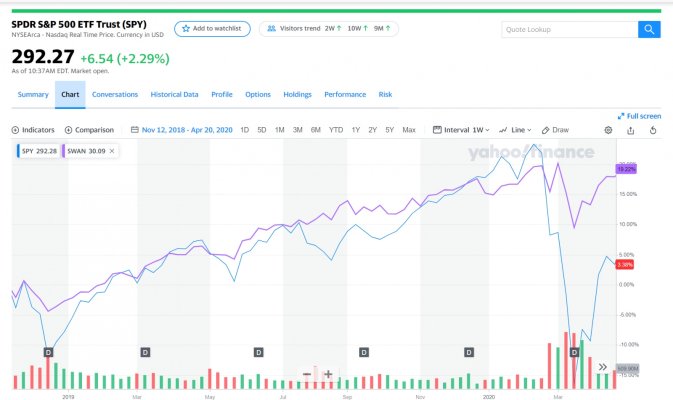I’m a big fan of Nassim Taleb. He has coined the Barbell strategy which is quite different from what I normally see. If there were an investment company implementing this strategy and accepting my savings (I’m no millionaire - apparently the precondition) I would consider investing there.
The 90% percent part covering inflation seems to be feasible to manage by myself. However, the 10% high risk part (Option trading) that is supposed to return high yields (best case scenario) or in a worst case scenario still leaves the biggest (other) part intact, seems difficult.
So, I have got a few questions:
- Has there been anybody here successfully applied this strategy?
- How much expertise and insight is required to consider option trading in the context of early retirement?
- Are there any (trustworthy - if this can be applied at all ) investment companies that offer such a barbell strategy fund for non-millionairs?
) investment companies that offer such a barbell strategy fund for non-millionairs?
- Are there any companies offering option trading strategy funds yielding good results?
Oliver
The 90% percent part covering inflation seems to be feasible to manage by myself. However, the 10% high risk part (Option trading) that is supposed to return high yields (best case scenario) or in a worst case scenario still leaves the biggest (other) part intact, seems difficult.
So, I have got a few questions:
- Has there been anybody here successfully applied this strategy?
- How much expertise and insight is required to consider option trading in the context of early retirement?
- Are there any (trustworthy - if this can be applied at all
- Are there any companies offering option trading strategy funds yielding good results?
Oliver
Last edited by a moderator:

